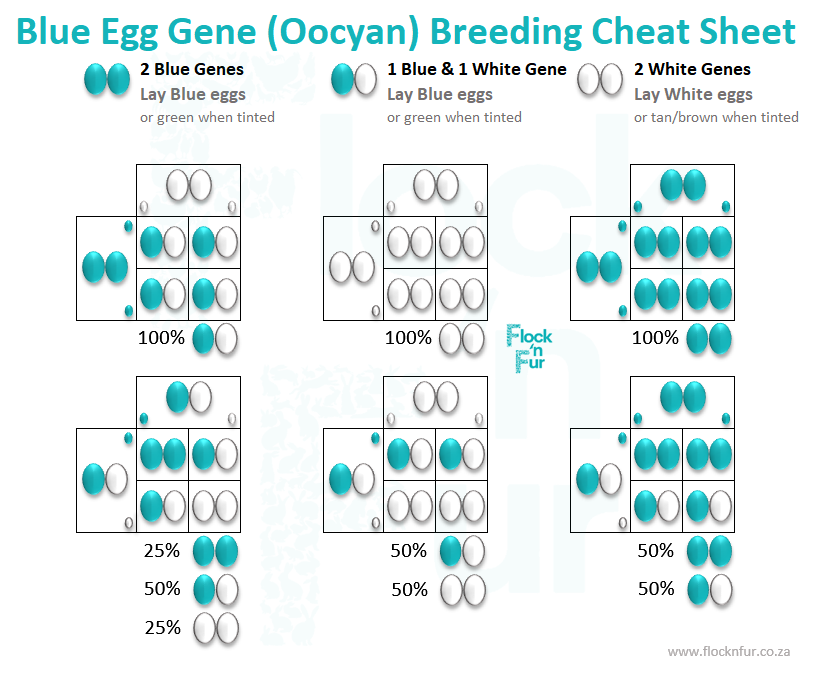Previously, our only option for DNA lab tests was to ship feather samples to a lab in Miami, US [link for clients outside of the US]. This was not ideal in comparison to local testing, although international readers might still consider this option.
For local DNA testing in South Africa, we have approached a lab in Pretoria called ZooOmics™. They were already conducting DNA testing on other animals but not yet on chickens. Upon request, their R&D team, real superstars, took only a week to develop the first test on chickens for us, which was for the Blue Egg gene, Oocyan (SLCO1B3). We are now exclusively DNA testing our chickens with ZooOmics™ and are working with them to develop more tests for us.
Available Tests and Pricing
Lavender Feather Colouration Gene (MLPH)

- Abbreviation: LAV
- Test name: Lavender Feather Colouration (MLPH)
- Description: Tests for the presence of the lavender plumage gene, which is a recessive gene.
- Price: R350 excluding VAT per test (at the time of writing this article, subject to change).
Blue Egg Gene (Oocyan SLCO1B3)
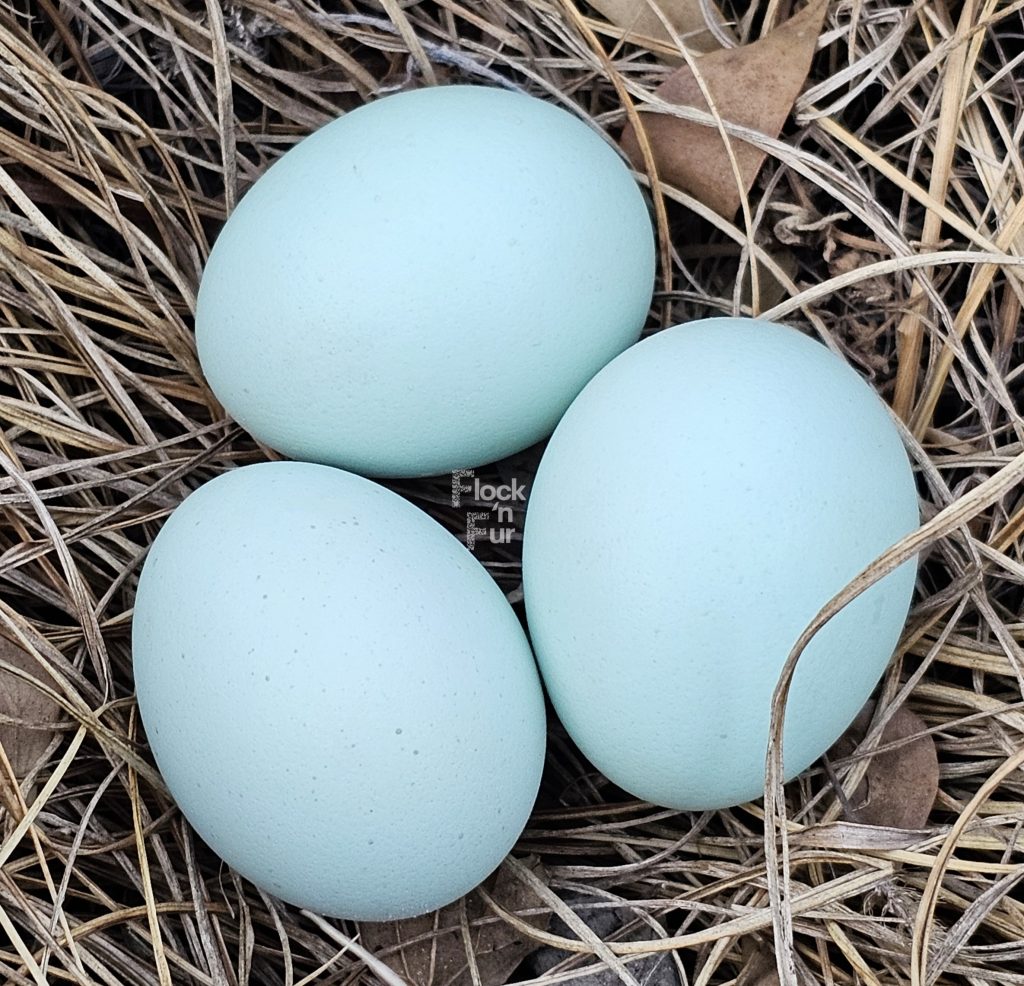
- Abbreviation: CEC
- Test name: Chicken Egg Colouration | Oocyan (SLCO1B3)
- Description: Determines the presence of the blue egg gene, which is a dominant gene.
- Price: R250 excluding VAT per test (at the time of writing this article, subject to change).
Sample Collection and Submission
Submission Forms
To begin the testing process for DNA testing, follow these steps below to acquire and complete the submission form.
Request the Form: Email ZooOmics™ at info@ZooOmics.co.za to request the sample submission form or download it directly from their website. You can also see their official sample guide here; however, it does not yet contain feathers at the time of writing this article.
Complete the Form: When completing the form, you may leave the registration number and microchip number blank. For species, add “Chicken” and then add your breed. Ensure to add the correct gender and date of birth. The sample type will be feather or blood, depending on your selection. In the Sample Name (or Sample ID) column, add your ring number if the chicken is ringed with a SASPO ring. If the chicken is not ringed, create a unique code that you can use to reference that particular chicken.
- For the Test Requested column, write the appropriate abbreviation(s). For example:
- CEC for the Chicken Egg Colouration | Oocyan (SLCO1B3) test.
- LAV for the Lavender Feather Colour Gene test.
- If testing the same sample for multiple genes, list them on the same line, separated by a “+”, semicolon, or comma.
Here is an example of the sample submission form to order the tests:

Submitting the Form: Email the completed submission forms to info@ZooOmics.co.za and include a copy with your samples.
Sample Type
Feathers: The samples should be a few plucked feathers (2-4 tail feathers per chicken are preferred; wing feathers are an alternative).
Blood: Blood samples should be in a purple EDTA tube. Your vet can assist with obtaining blood samples and providing the test tubes if this method is preferred over feathers.
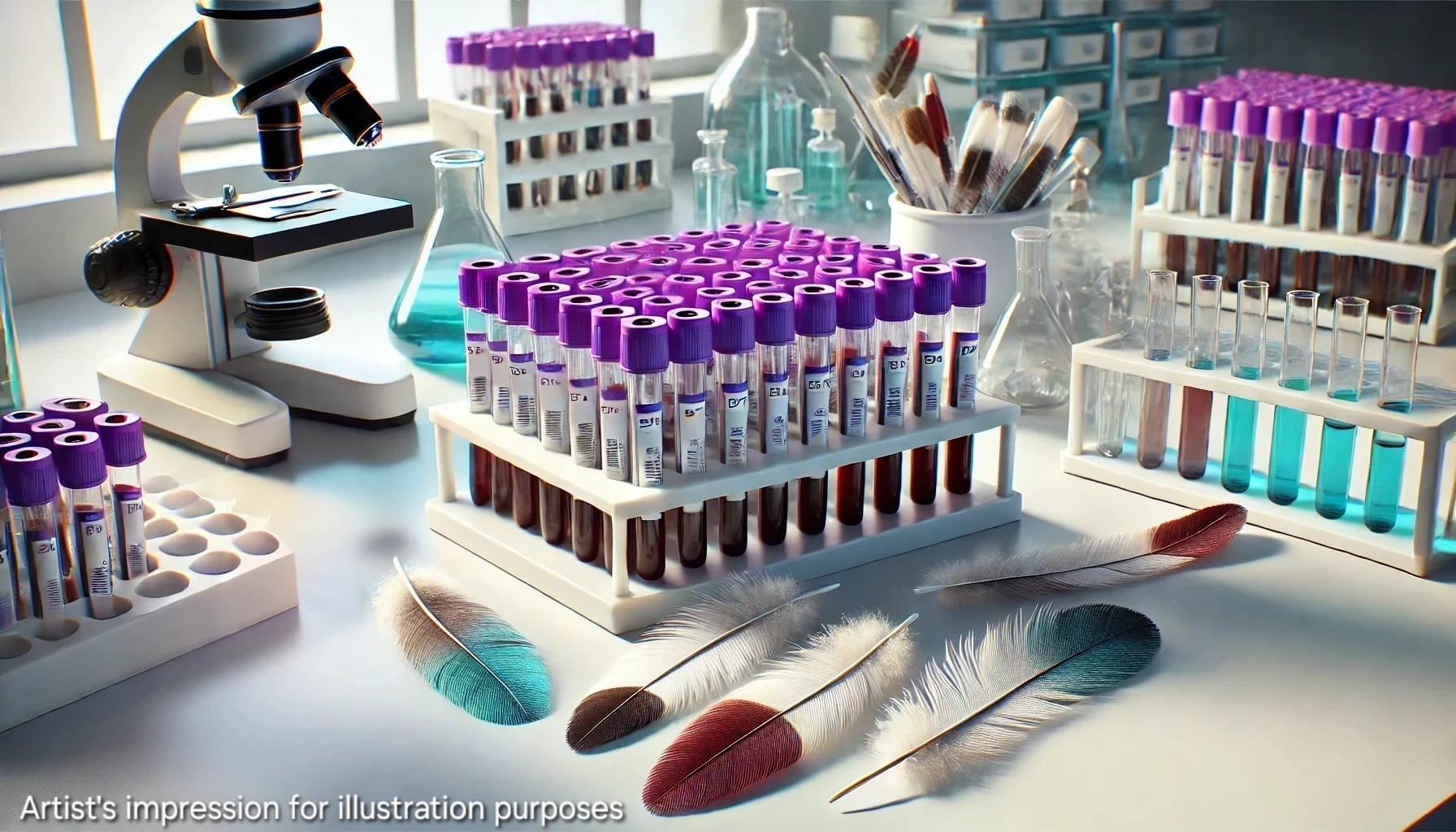
Packaging
Feathers: Package the feathers in a paper envelope, clearly labelled with the sample name to avoid mix-ups. When plucking feathers, ensure you do not touch or compromise the end that was in the chicken, as it needs to remain uncontaminated. Each envelope should contain feathers from only one chicken. Combine all the individual envelopes into one larger package.
Blood Samples: If using blood samples, ensure that the purple EDTA tubes are clearly labelled with the sample name and securely packaged and combined into one larger package for shipping.
Labelling
Every sample must be marked with the corresponding sample label/ID or sample name from the submission form to ensure each sample can be identified.
Submission Options
Courier Service: ZooOmics™ can provide a courier service that can collect the samples from your home or vet at a cost of R116.89 (at the time of writing this article, subject to change). When the samples are ready for collection, email the collection address and contact details to info@ZooOmics.co.za to arrange the courier.
Own Courier or Hand Delivery: You can use your own courier or hand-deliver the samples to their offices at 525 Justice Mahomed Street, Muckleneuk, Pretoria, 0002. If you are using your own courier, also send the tracking information for the package to info@ZooOmics.co.za. Packages can be directed to ZooOmics™, team leads (Candice or Catherine), or the specific analyst dealing with your query. You can also use their office cell phone number, 071 493 2137, for the contact number.
Process After Submission
Upon receiving your samples, ZooOmics™ will send you an email with a quotation for the work proposed, a reference number, and their banking details. Results will be available within 7-14 working days from the receipt of the quotation for the work proposed. Results are released only upon receipt of payment.
By following these steps, you can efficiently test for the blue egg genes in your flock with ZooOmics™.
Sample of what the confirmation email would look like, where they ask you to verify that the information captured is correct:

Sample of the order confirmation below – This is essentially a list of everything included in your order for testing:

Results
Interpreting Results for the Lavender Feather Colouration Gene (MLPH)
A sample of what the results would look like:
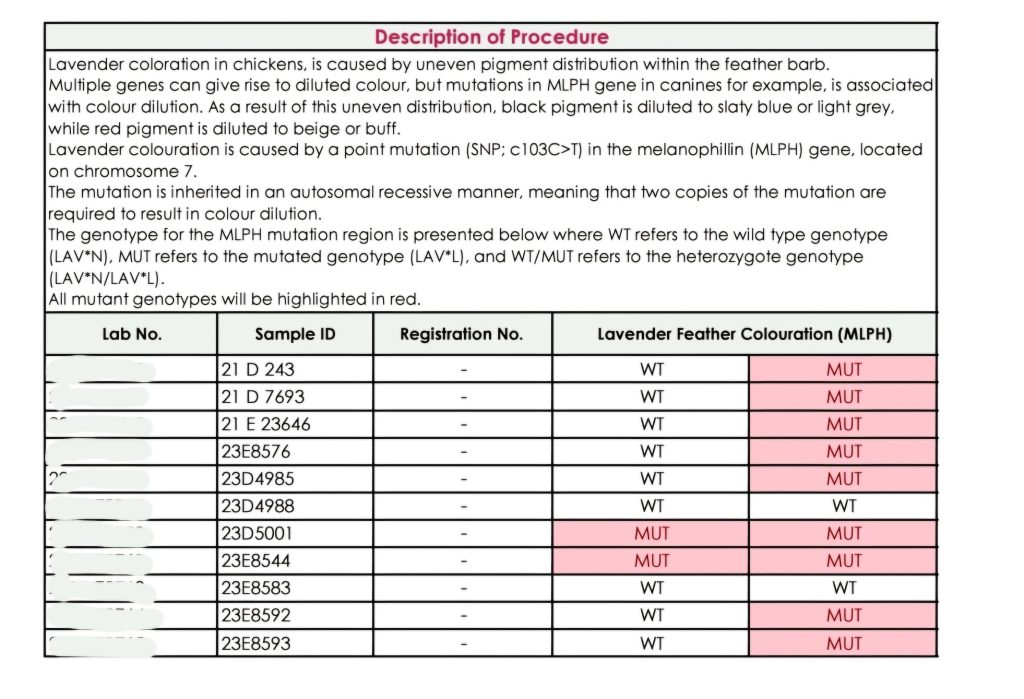
- WT (Wild Type – Base colour/Not Lavender)
- MUT (MUTation – Lavender)
- One WT and one MUT: One copy of the Lavender gene.
- Two MUT results: Two copies of the Lavender gene – there is no point in testing these as you can see the Lavender plumage. In the sample, they were tested as part of a control group to develop the test.
- Two WT results: No Lavender gene.
Once you have your results, you can use the Lavender Plumage Breeding Cheat Sheet below to understand what to expect from matches based on your chicken’s Lavender gene test results. For more information on breeding for Lavender Plumage, see our article, on the subject.
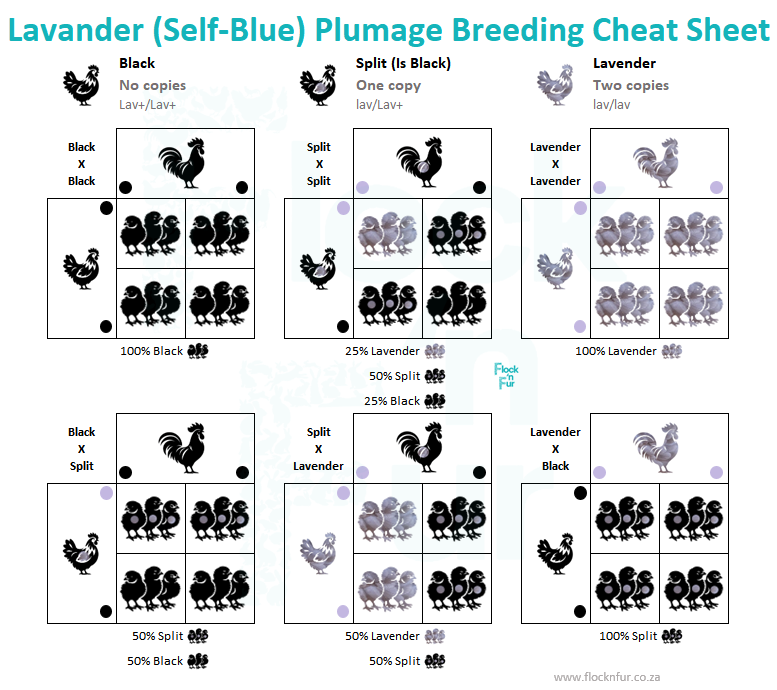
Interpreting Results for the Blue Egg Gene (Oocyan SLCO1B3)
A sample of what the results would look like:
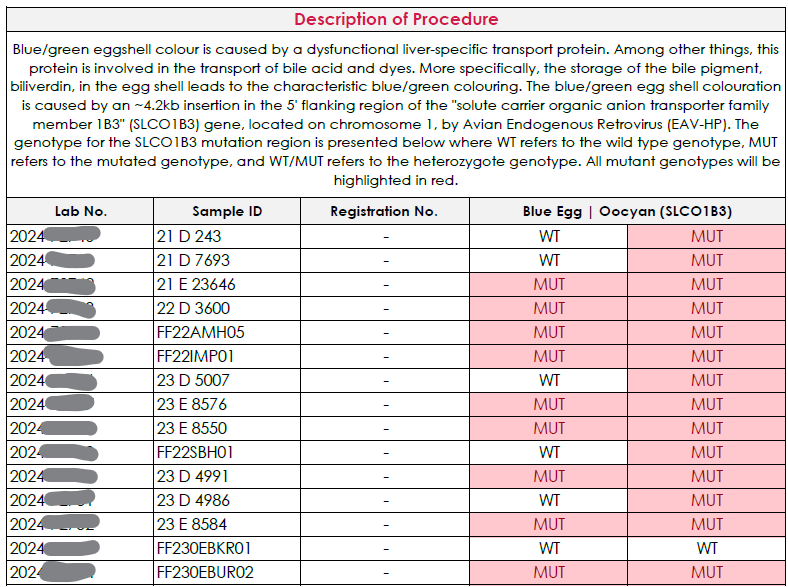
- WT (Wild Type – White Egg Gene)
- MUT (MUTation – Blue Egg Gene)
- One WT and one MUT: One copy of the blue egg gene.
- Two MUT results: Two copies of the blue egg gene.
- Two WT results: No blue egg gene.
Once you have your results, you can use the Blue Egg Gene Breeding Cheat Sheet below to understand what to expect from matches based on your chicken’s blue egg gene test results. For more information on breeding for the Breeding for the Blue Egg Gene, see our article on the subject.
